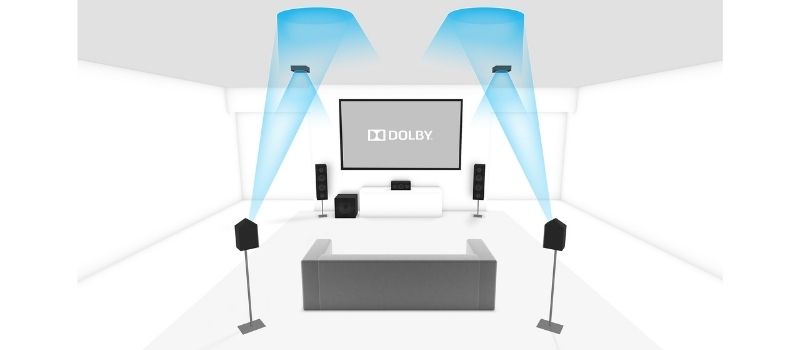
Dolby Atmos: a simple explanation of complicated technology
When was the last time you saw a movie? If you go to the cinema every week, you are probably a big screen lover. You enjoy a large bright picture and realistic sound like many of us. In fact, that is exactly the sound that makes your perception so much natural with the latest Dolby Atmos technologies. But what is so special about it?
(Image: Dolby Laboratories, all right reserved.)
Dolby Atmos is a technology that uses a surround sound system to distribute the sound by several channels around the viewers so they can enjoy a much deeper immersion into the media content on the screen. Developed by Dolby Laboratories, this technology was first used in Los Angeles for the Brave premiere in the El Capital Theatre in 2012. There were around 25 such installations, and the number began to increase.
(Image: Dolby Laboratories, all right reserved.)
The system’s main idea is to make a “real presence” surrounding sound so that the viewer can pinpoint any outcoming sound’s location. For example, if the people on the screen talk with each other, then the sound must come from the front center. If the car moved “from behind” from one side to the other, then the sound should not just come from the left speaker wall to the right but gradually move from one corner to another. This way the sound is made by several specific speakers installed in the right way.
To recreate Dolby surround sound system, at least five speakers and one subwoofer should be used. This is the minimum number of speakers required; however, typical cinemas have much more speakers than that. The main idea is to set the speakers for specific positions: Centre(C), Right-Front(RF), Left-Front(LF), Left-Surround(LS), and Right-Surround(RS). A subwoofer is usually placed in front and produces low-frequency sounds like boom, thumps, blows, etc.
(Image: Dolby Laboratories, all right reserved.)
Some more complex setups will improve the experience by adding ceiling speakers, surround-back speakers, and subwoofers accordingly. These speaker positions can be limited by the total number of 64 speakers, which is a lot even for the typical theatre.

(Image: Dolby Laboratories, all right reserved.)
Dolby Laboratories has also got its cinemas (Dolby Cinema) equipped with all of the latest technologies and its content mastering and delivery format – Dolby Vision. The format supports HDR, Ultra HD, 8K resolution, Perceptual Quantizer, etc. – everything that makes the picture smoother and more realistic. Such premium cinemas are located mainly in the USA (some of them are in Europe) and the company already has around 200 cinemas in total.
(Image: Dolby Laboratories, all right reserved.)
The company decided not to stop with the cinemas, and the Dolby Atmos technology is used for home theatres too. Even though no home theatre can provide as many speakers as cinemas, this technology is still relevant for the home theatre setup’s immersive effect.
Depending on one’s budget, home theatres can provide the 5.1 setup mentioned above and 7.1, adding two more speakers on the sides. These home setups can handle basic Dolby technology immersion; however, there are more complex installations even for home theatres. 9.1 setup, 11.1 setup, and in some cases, this adds 2 or 4 ceiling speakers, and the system becomes 11.1.4. For economic reasons, you can omit anything connected with the ceiling speakers by buying upward-firing soundbars that will create an illusion of the sound coming from the top.
(Image: Dolby Laboratories, all right reserved.)
So the Dolby Atmos technology is easy to understand even though it seems complicated at first glance. The technology was innovative as it appeared and kept improving every day. Even if the production and installation require many resources, the endpoint will surprise with the pleasurable and worthy result.
- On March 9, 2021
- 0 Comment


